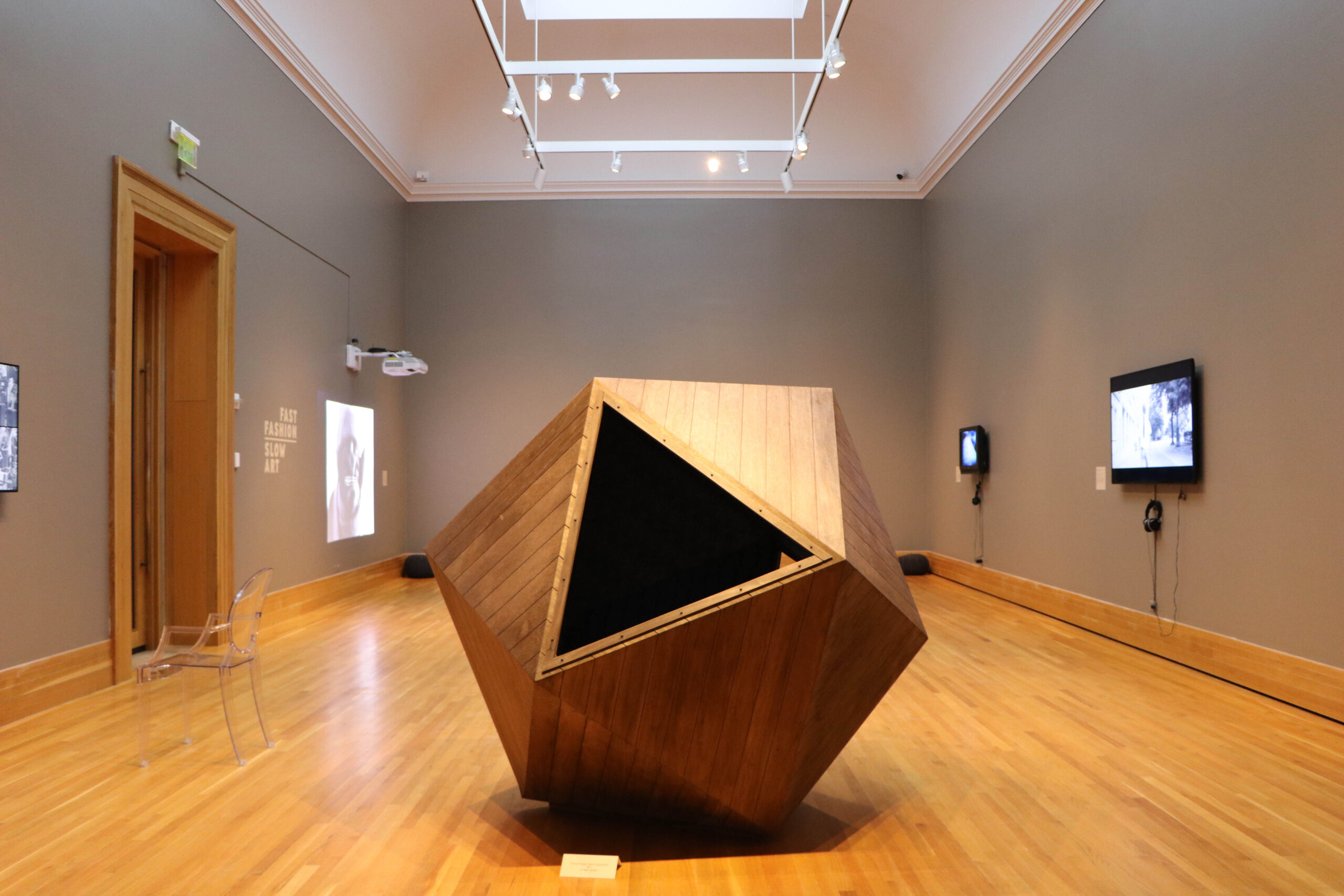‘Fast/Fashion’ sparks dialogue on clothing industry
February 28, 2020
 Sophia Wei
Sophia WeiWhen you walk into the Boyd Gallery on the second floor of the Bowdoin College Museum of Art (BCMA), you encounter “Fast Fashion/Slow Art”—an exhibition that scrutinizes the contemporary garment industry through videos, installations and collaborations with contemporary artists and filmmakers.
The walls are covered with digital projections and tablets that display videos of how garments are made, distributed, used and discarded—with 10 videos in total designed to make you pause and think.
“There’s a lot of information in these videos and also a lot of analysis and interpretation that the viewer can take,” said Bibiana Obler, associate professor at George Washington University and one of the exhibition’s co-curators. “I didn’t want people to come and just look, ‘oh, how beautiful’ and then leave again, or ‘how moving’ and leave again.”
This exhibition is meant to make people stop and think about their choices, critiquing the concept of fast fashion through documenting how clothes are made, used and discarded. Some garments are kept for decades while some are for one-time use—this duality is explored through visual juxtaposition.
“This is an exhibition that I think helps us to be aware of the many literal hands that may be involved in constructing the clothing that we wear, no matter what its origins may be,” said Co-Director of BCMA Anne Collins Goodyear. “But it also has made me more aware of the intellectual power of stitching, and the ways in which we may, ironically, sometimes deprive ourselves of creative engagement through the fact that we are constantly outsourcing so-called craft activities to third parties.”
The exhibition was first shown at the George Washington University Museum and the Textile Museum in Washington, D.C., and is now showcased here in Brunswick to highlight how textile policies are made and where the natural textiles are made. It was curated by Obler and Phyllis Rosenzweig, curator emerita at the Hirshhorn Museum, with organizational assistance from Goodyear and Allison Martino, BCMA’s Mellon postdoctoral curatorial fellow.
“So the show opened in Washington, D.C., which of course is the policy-making center, and to travel here to Brunswick, where the town used to be centered around the textile mill up the road at Fort Andross, showcases the implications of textile policies and brings it full circle,” said Goodyear.
The center of the room has an Electroknit Dymaxion, a map designed by textile artist Cat Mazza and the Lattice20 Collective, a group of students from UMass Boston who helped create the piece. When it was first installed in D.C., the sections were laid out on the wall to highlight the geographic implications of the fashion industry, creating an international scope within the exhibition. At Bowdoin, they’re shaped into a geographically-accurate globe, mirroring how they were made.
To continue the dialogues opened by the installation, Mazza and members of the Lattice20 Collective are coming to campus on Friday to walk students through an activity which showcases sustainability in the fashion world. The workshop will explain not only how the group created this centerpiece, but why.
“Fast Fashion/Slow Art” will be on display until August.

Comments
Before submitting a comment, please review our comment policy. Some key points from the policy: